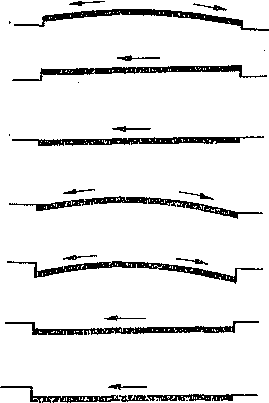Each road should be built in this way, that the water would not stop on its surface. Persistent water hinders the use of the road, and after the freezing of the water can pose a threat to movement. The greatest difficulty for traffic and the threat to the destruction of the road causes water to remain on the ground surfaces. Rainwater can be discharged from the surface in two ways. The first is to give the surface of adequate porosity and permeability, tj. features enabling water to penetrate into the ground. Dehydration in this way can only be used for ground and hard surfaces made on a properly permeable substrate. In order to use this method of draining roads on soils with low permeability (drainage). The discussed method of draining rainwater from the surface has this advantage, that it enables the use of rainwater adjacent to the road of vegetation, and also fabrication facilitates air access to plant roots. This is particularly important for woody plants growing on the streets and squares.
Water drainage in the discussed method is inhibited as a result of the persistent frozening of the substrate, which usually occurs for a short period during spring thaws. It can also be difficult to determine, occurring in the event of applied to the surface of crushed materials.
The most commonly used method is the surface drainage of water from the road surface. For this purpose, the surface is suitable for adequate transverse and longitudinal decreases or one of them. Water can be drained to the surface of the adjacent area, np. lawn, where he soaks into the soil, or it can be taken properly, np. by placing a protruding curb and lead towards the longitudinal decline to the sewage network.
 Different ways to form transverse slopes.
Different ways to form transverse slopes.